
Casting : Chaparral 2G

Years of Production:
1969 - 1970
Country of Origin:
US and Hong Kong
Casting Variations:
US vs. Hong Kong Differences
Interior Colors and Glass :
US
* Clear glass
* Black Interiors
Hong Kong
* Blue glass
* Black Interior
Brown Interior is Rare
Paint Colors and Variations:
| Color | US | HK |
| Aqua | Common |
Uncommon |
| Blue |
Uncommon |
Common |
| Light Blue |
Hard to Find |
- |
| Green |
Common |
Common |
| Apple Green |
Rare |
- |
| Lime Yellow |
Uncommon |
- |
| Antifreeze Lime |
Hard to Find |
- |
| Magenta | Hard to Find |
- |
| Olive |
Uncommon | Rare |
| Orange |
Common | Rare |
| Purple |
Uncommon | Rare |
| Red |
Common | Common |
| Rose Red |
Uncommon | - |
| White Enamel |
Most Common |
Hard to Find |
| Yellow |
Hard to Find |
- |
| Hot Pink |
Rare | - |
Other versions of same Casting:
1974 Winnipeg
Comments:
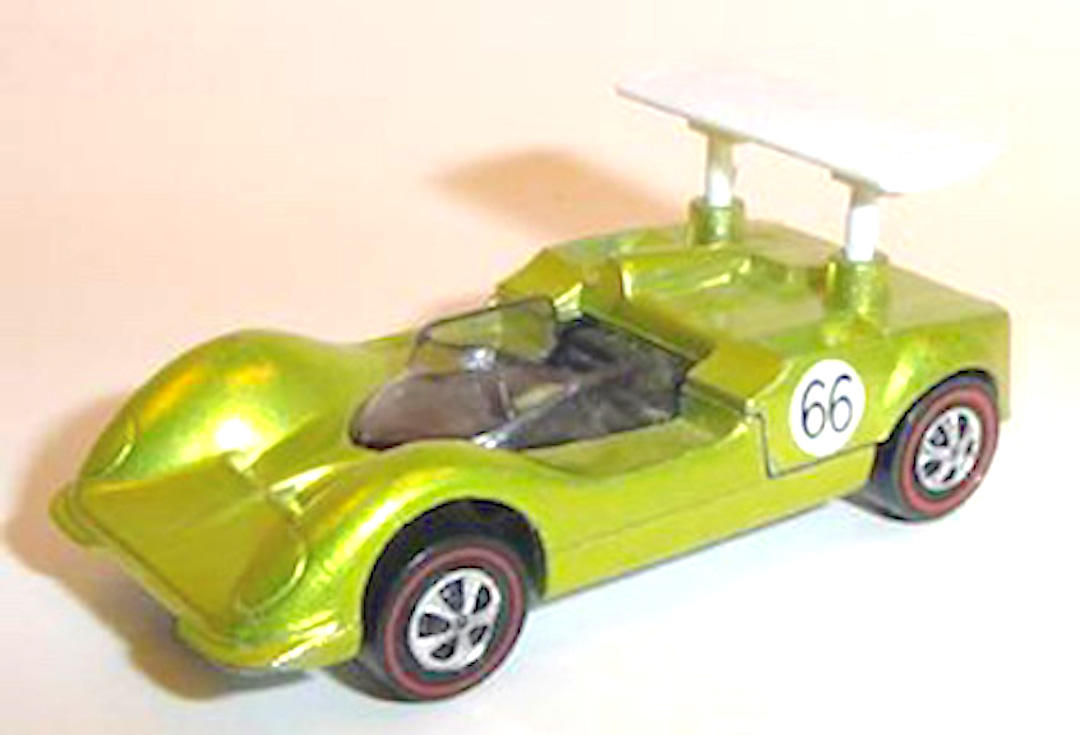
The Chaparral 2G in Spectraflame Antifreeze
The Chaparral 2G was released in 1969 as part of the new Grand Prix Series. The real Chaparral 2G was the creation of designer/builder/driver Jim Hall.
The 2G was one of an interesting lineage of Chaparral cars that Hall built and raced in the 1960's at various CanAm events.
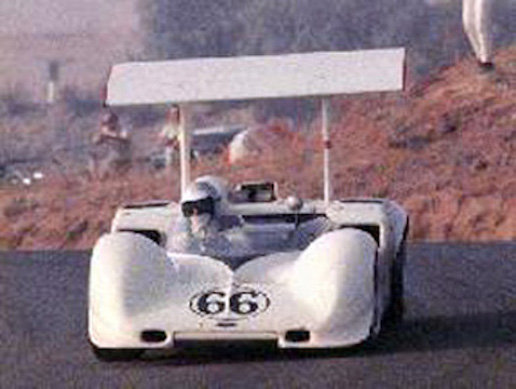
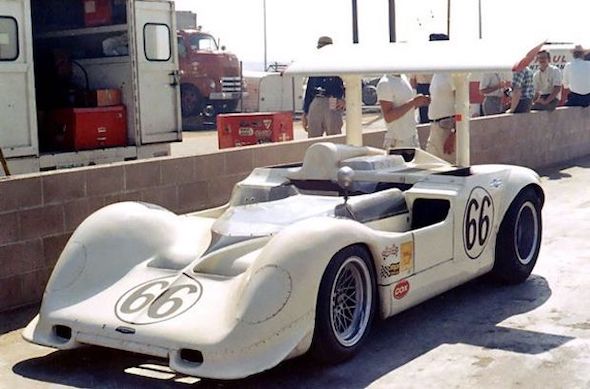
Jim Hall in the Chaparral 2G at Riverside
A unique feature of Hall's cars was a large hydraulic rear spoiler designed to provide better control through turns but less drag on the straightaways.The spoiler
debuted on the Chaparral 2C and evolved through a number of variations on later cars. The 2G competed in CanAm races in 1967-68, scoring two wins. Jim Hall's
driving career ended in November 1967 when the Chaparral 2G he was driving struck the rear of another car and flipped over, pinning Hall and breaking both of his legs.
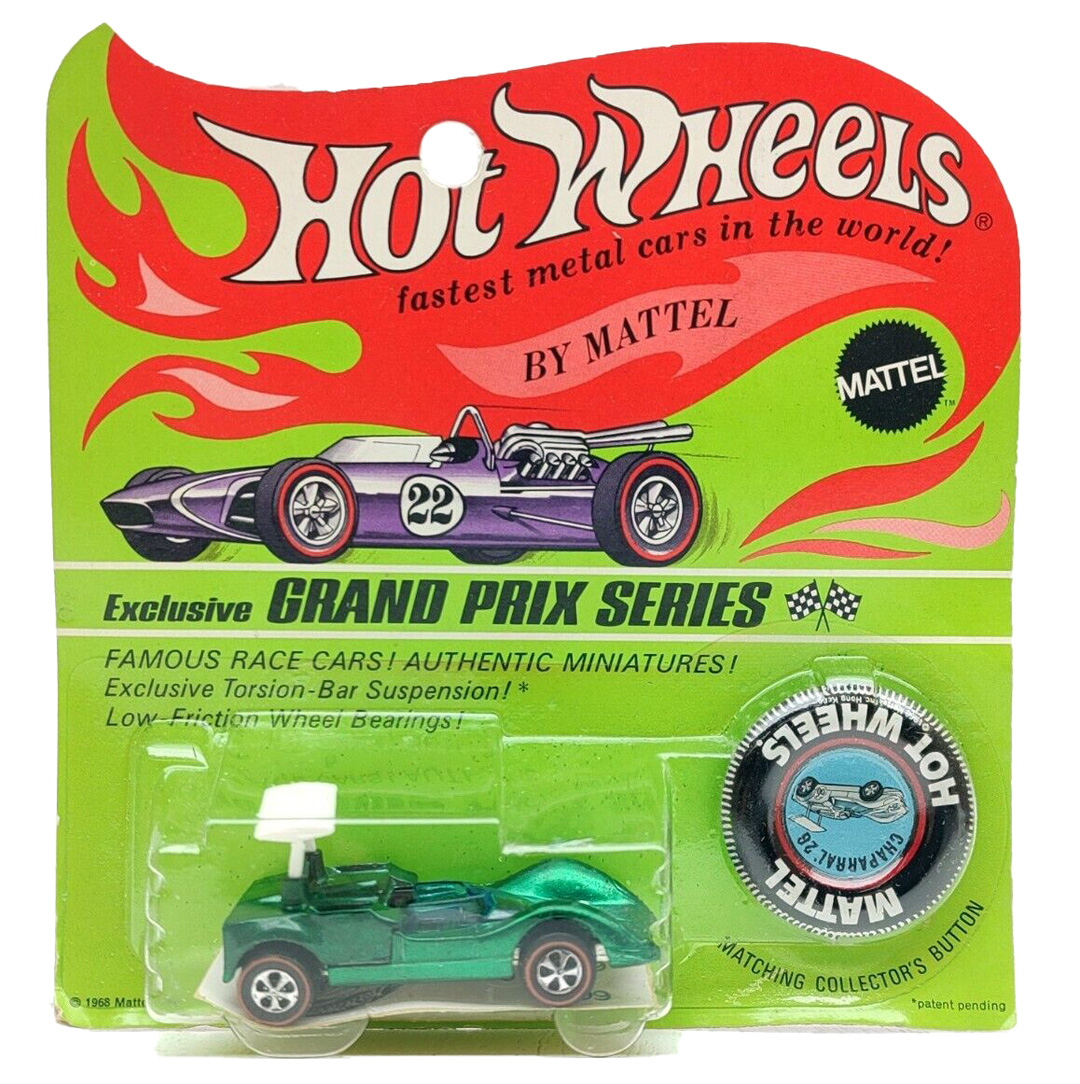
The Chaparral 2G in Grand Prix Blister Pack
The Hot Wheels version of the Chaparral 2G is an accurate replica of the real car, featuring a plastic spoiler mounted on the rear hatch that opens to reveal the engine.
A sticker sheet with Jim Hall's signature "66" racing numbers was included in the blister pack. The Chaparral 2G was produced in various Spectraflame
colors, as well as in white enamel like the real car. Chaparrals were produced at both the US and HK factories with few differences between the versions.
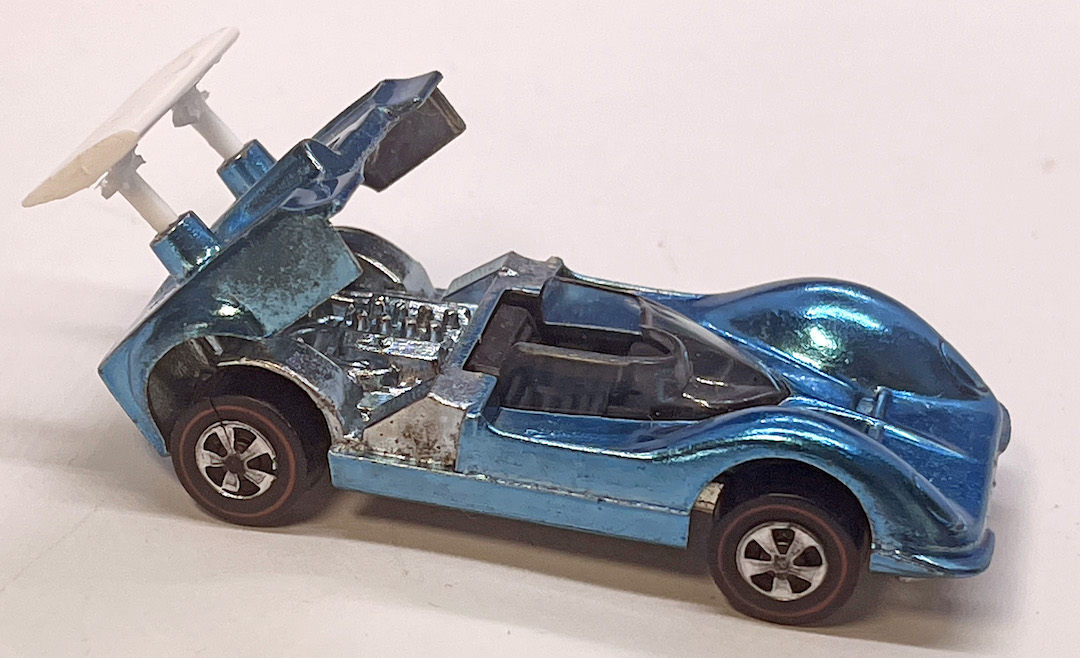
The Chaparral 2G Engine Compartment
As with some of the other Grand Prix castings, the Chaparral was plagued with rear hatch problems. Later variations included a stop peg to keep the hatch
from opening too far. kids were advised to add "racing stripes" (i.e. tape!) to keep the hatch closed when running the car down the track.
Most examples of the Chaparral 2G were produced with bearing style wheels , however production of the Chaparral 2G crossed the transition period to capped wheels.
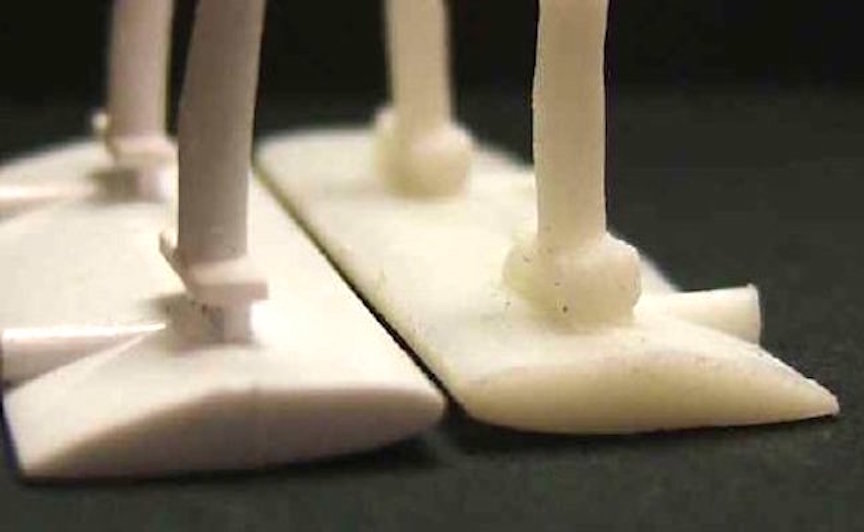
A comparison of original (L) and reproduction (R) Chaparral wings
Original plastic spoilers have become almost as valuable as the car itself! They have become brittle with age, very fragile and prone to breaking
where the post attaches to the bottom of the wing. Reproduction spoilers are available from various sources, and some of these are of reasonable quality.
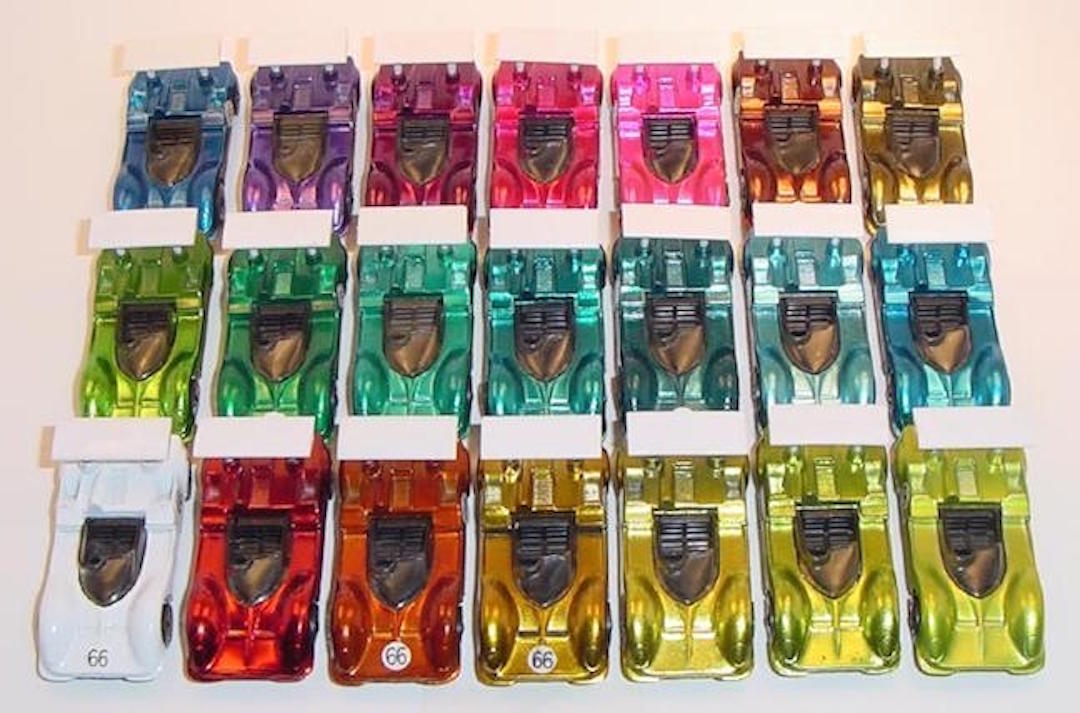
A US Chaparral rainbow
Like all 1969 Grand Prix cars, the Chaparral can be found in most of the first generation colors with the exception of creamy pink. While Chaparrals in
second generation colors such as yellow, magenta, light green and pink are uncommon, they do exist. Most magenta Chaparrals appear to have cap style wheels,
consistent with the fact that they were produced late in the production run.
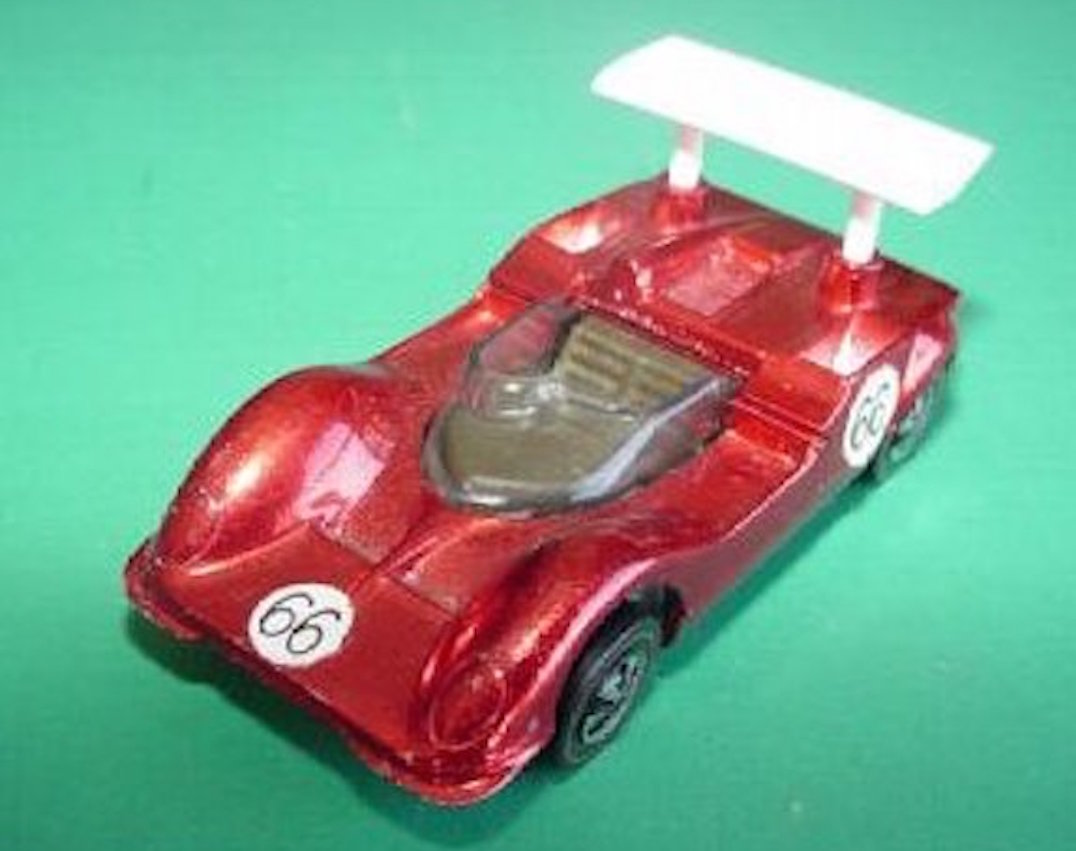
US Chaparral with brown interior
US cars featured a clear windshield and a black interior. A few US Chaparrals have been found with brown interiors.
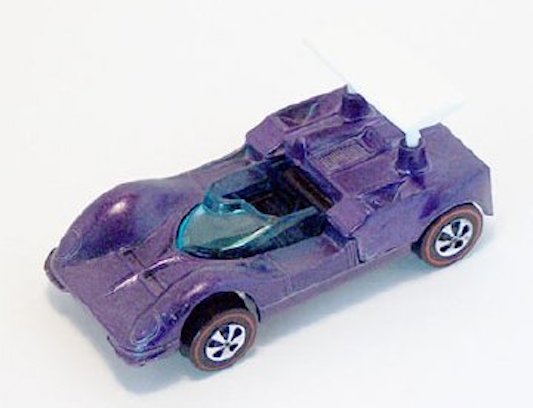
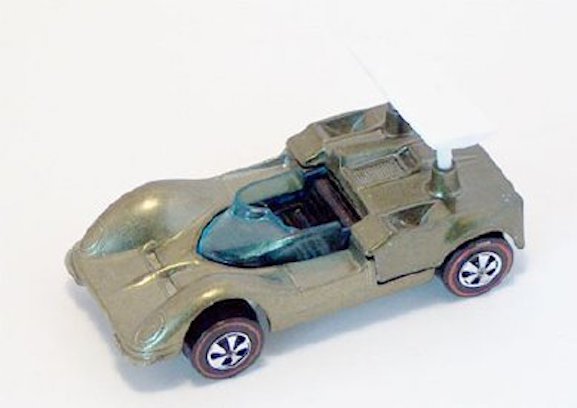
Rare HK Chaparral 2Gs in purple (L) and olive (R).
HK Chaparrals are a challenging group of cars to collect! They differ from US Chaparrals in that they have blue-tinted windshields, chrome rather than silver wheel
trim, and a different base (four square openings). They are relatively common in red, green and blue. In fact, HK blue Chaparrals are more plentiful than US blue Chaparrals.
Interestingly, this is the case for most of the 1969 wide-body Grand Prix cars. Aqua and white enamel are tougher colors for HK Chaparrals. Olive, purple and orange cars
are rare. Two HK orange Chaparrals have been found, including one that is part of a track set and is still packaged in the original plastic bag! It may be that some of
the rarer colors of HK Grand Prix cars were only available in track sets.

Allan Rosen's awesome Hong Kong Chaparral rainbow
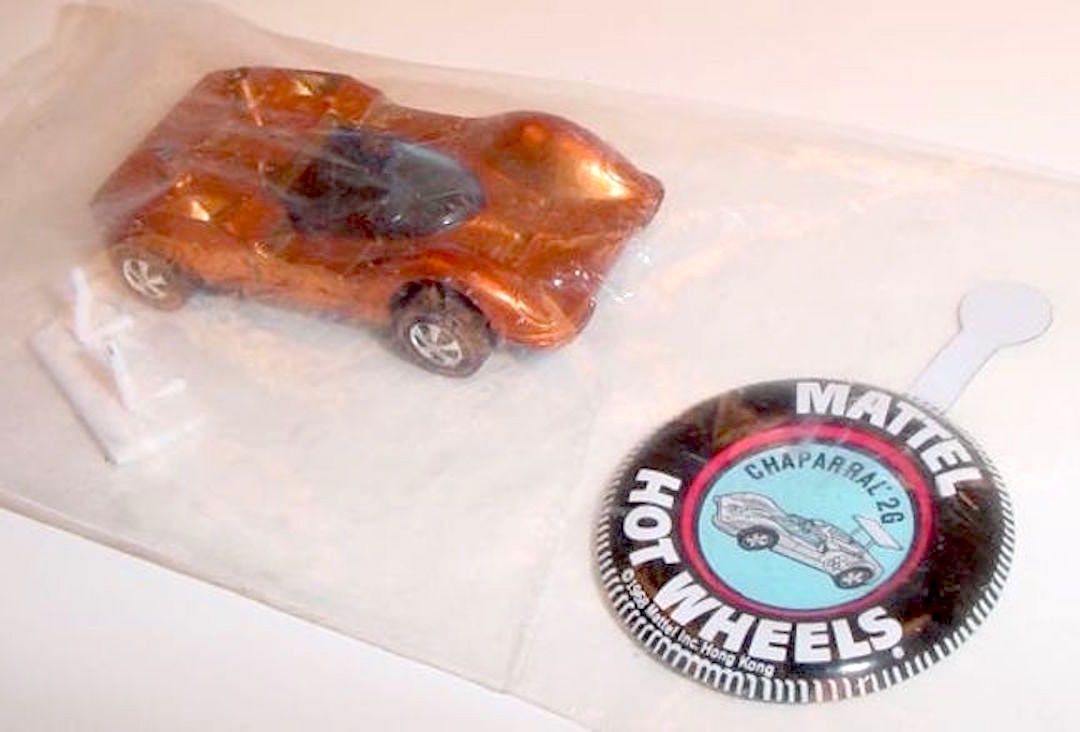
An orange HK Chaparral in the original bag from a UK track set!
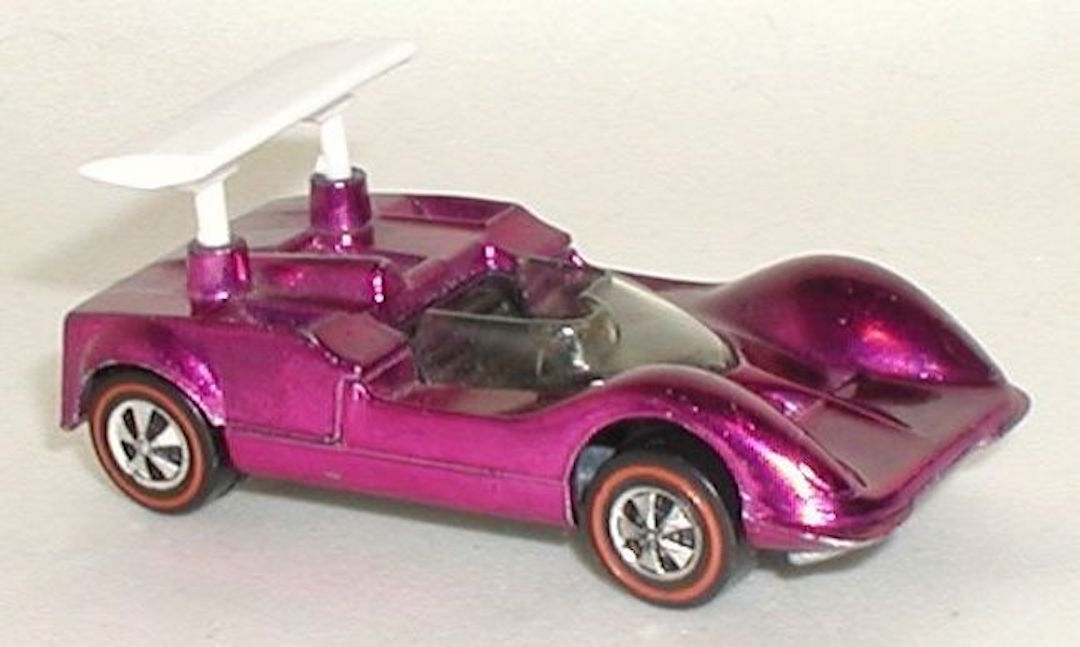
A magenta US Chaparral with capstyle wheels
Prototypes:
Some rare and interesting prototype Chaparrals have been found. One of these is a raw ZAMAC (unpainted) car. Another is
a red enamel Chaparral. A third prototype Chaparral is a black enamel car that served as a test of the casting die.
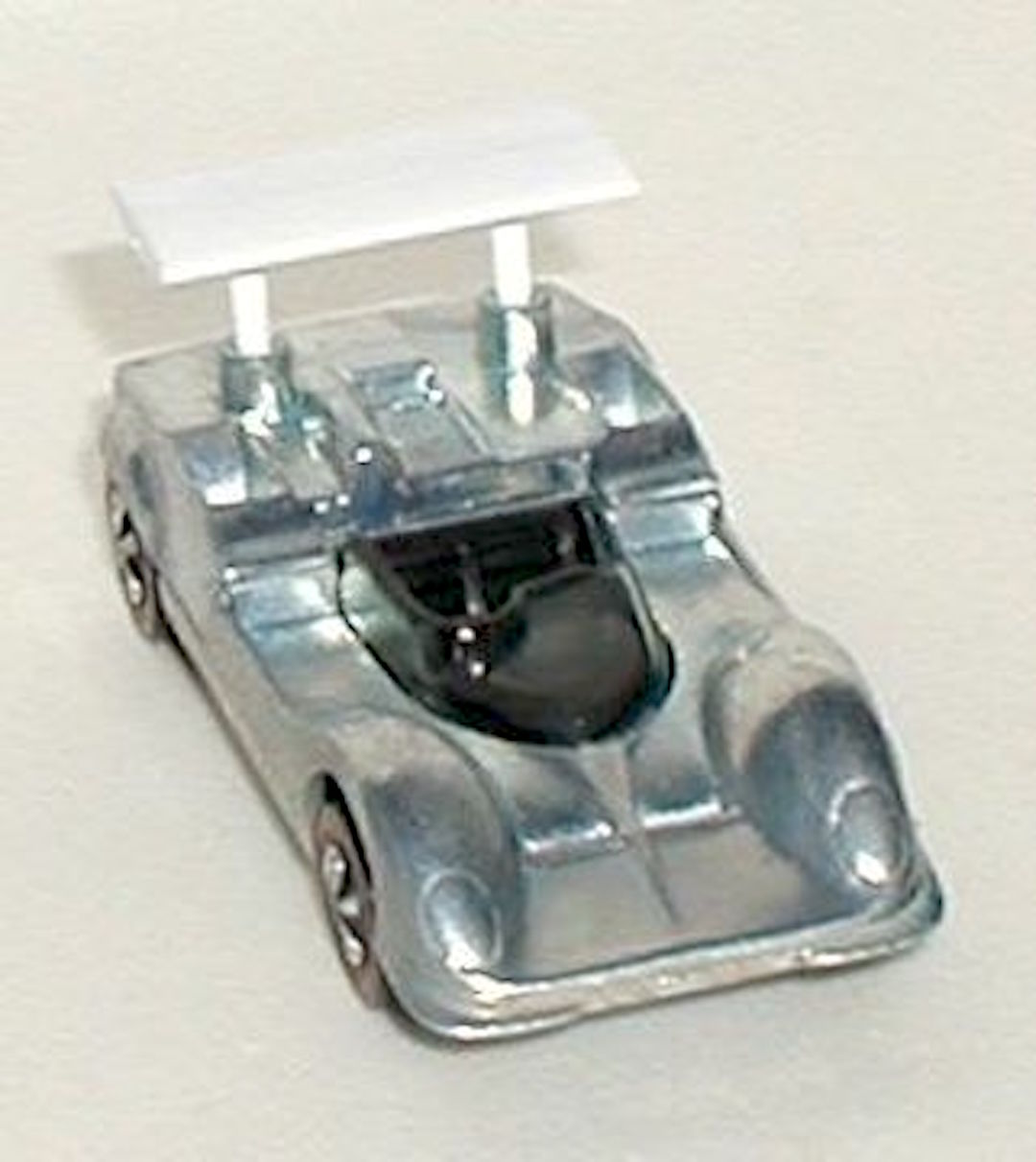
Unpainted ZAMAC
Photo of Red Enamel, courtesy of Bob Case, Littletoycars.com
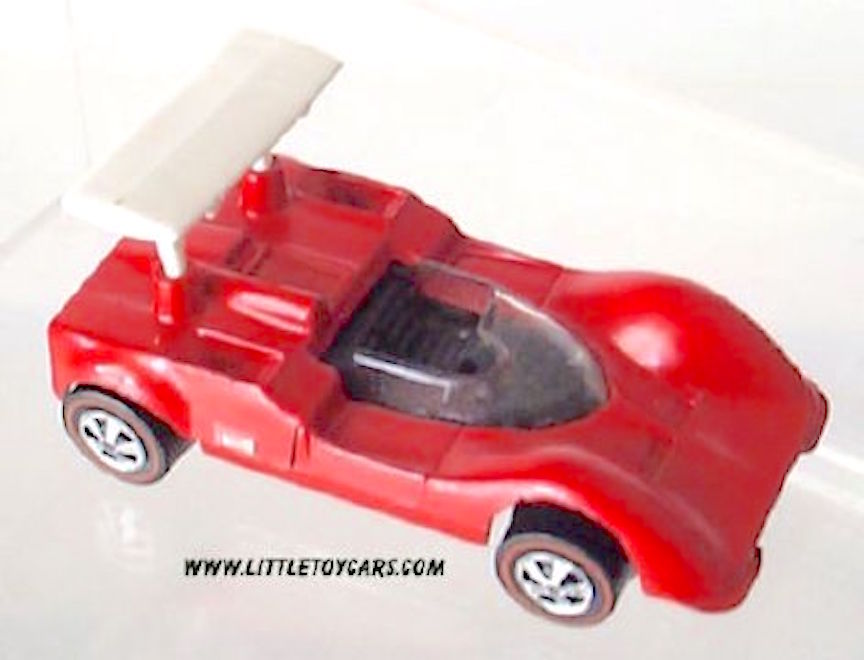
Red Enamel
Photo of Red Enamel, courtesy of Bob Case, Littletoycars.com
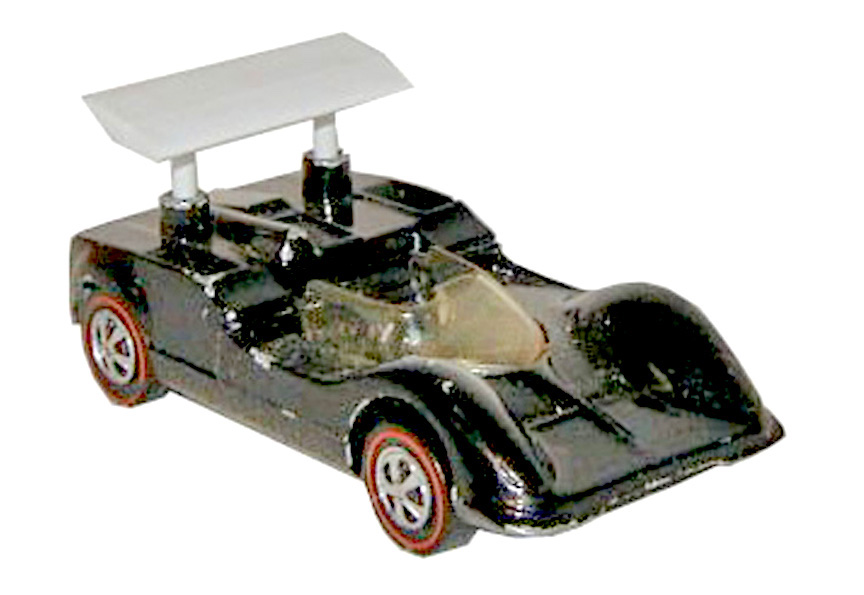
A black enamel prototype Chaparral.
Credits:
Photos and text by Rick Wilson, Bob Case and Ted Gray
Visit Rick Wilson's Redline Grand Prix site for more information.
| All |
1968 |
1969 |
1970 |
1971 |
1972 |
1973 |
1974 |
1975 |
1976 |
1977 |
Alphabetical |
| Customs | |
Gran Prix | |
Heavyweights | |
Spoilers | |
Super Chromes | |
Alternate Colors | |
CIPSA | |
Home |

* DISCLAIMER *
Private use of original images is allowed.
Non-profit, non-commercial publication of original images is allowed only with prior expressed written consent from Graymatters.
For other commercial, for-profit or redistribution needs, please contact the site owner. This site is not affiliated with Mattel, Inc.
Questions? ... Send me an e-mail: tngray@nautiloid.net
© 2013 by Graymatters. All Rights Reserved.